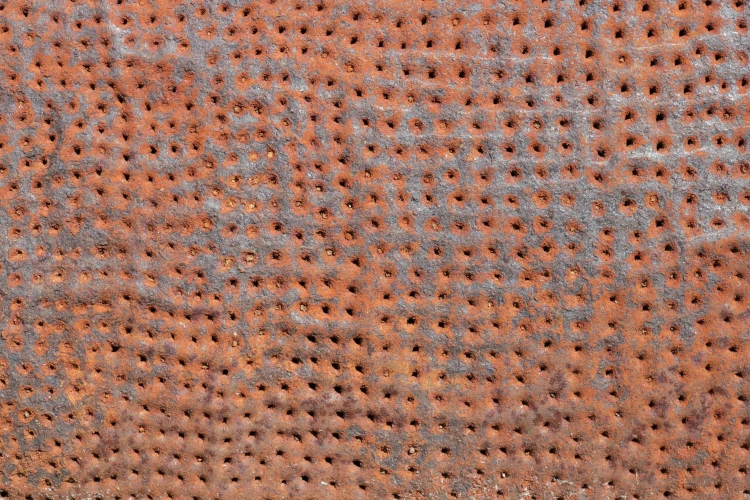
How To Deal With Hair Transplant Trypophobia?
Feeling uneasy about your upcoming hair transplant? You’re not alone. For those who experience trypophobia, or a strong aversion to clusters of small holes or patterns, the idea of undergoing a hair transplant can stir up real discomfort. While there is no official clinical classification of trypophobia in the DSM-5, it has been described in psychological literature as a visual-triggered aversion that can cause distress in some individuals.
Preparing for a hair transplant involves more than just planning for a new hairline. It’s also about being emotionally ready and feeling supported throughout the experience. Addressing concerns like trypophobia early can help you move through the process with more peace of mind.
Understanding Trypophobia and Hair Transplants
Trypophobia involves a strong reaction to grouped holes or uneven textures. Some people feel anxious or even sick when looking at things like a honeycomb or certain types of coral.
For individuals who report visual sensitivities associated with trypophobia, the dot-like pattern left temporarily on the scalp by follicular unit extraction (FUE) may trigger discomfort. While not clinically studied in the context of hair transplant recovery, the visual texture may resemble common trypophobic triggers.
As hair transplants gain popularity, more patients are acknowledging this kind of response. Naming the discomfort helps validate the experience and opens up room to talk with medical professionals about it.
The FUE technique can be particularly triggering. It works by removing individual follicles and placing them in tiny graft sites across the scalp — often hundreds or thousands of them. For someone sensitive to these visuals, the dotted pattern might feel unbearable.
Even though the appearance improves quickly and is often hidden by hair, it can be difficult to look at the scalp, particularly during the early days of recovery. Understanding this in advance can make a real difference in how you mentally prepare.
Signs You May Be Experiencing Trypophobia Hair Reactions
Not all patients experience the same level of sensitivity. However, some individuals with trypophobic tendencies have reported symptoms such as mild nausea, anxiety, or avoidance behaviours when exposed to certain scalp imagery post-procedure.
Recognizing these responses can help you figure out what you need to effectively cope with your distress or discomfort. Instead of brushing it off, you can use that awareness to shape your approach and find ways to stay grounded.
Try to identify if there are specific visuals that elicit distress or discomfort. Once you know what sets off your reaction, you can begin to make informed choices that keep your experience manageable.
Talking to Your Surgeon About Trypophobia

If you’re dealing with trypophobia, one of the most helpful steps you can take is to bring it up with your surgeon as early as possible, even during the consultation. This allows them to tailor how they present information to you — perhaps by avoiding graphic visuals or offering gentler descriptions of the procedure.
Some clinics may even be able to modify your viewing materials or guide you through the recovery process entirely with verbal explanations rather than image-based updates. Open communication can lead to a more comfortable experience throughout treatment.
Coping Strategies for Trypophobia After a Hair Transplant
If scalp images cause distress, try limiting how often you look at healing photos, especially during the first few weeks. A little distance can go a long way in easing your reaction. You might also find relief in breathing exercises, guided meditation, or visualizing your future results instead of the current stage. Shifting attention to your end goal can help take the edge off.
Some individuals may experience additional anxiety due to uncertainties around the cause of their hair loss — whether hormonal, autoimmune, or stress-related. Separately, those with trypophobic tendencies may feel discomfort during early recovery due to visual changes on the scalp.
Understanding the phases of recovery can aid with feelings of overwhelm and also bring clarity. Expect to see shedding, followed by gradual regrowth and thickening. The visuals might seem strange at first, but they’re part of the healing process. And don’t neglect your body during recovery — prioritize foods packed with hair-friendly vitamins and minerals to help speed things along and improve how you feel overall.
If you’re thinking about getting a transplant, take the time to learn what to expect, from the financial commitment to the healing timeline. Being informed gives you more control over the decisions you make and can help ease anxiety. If you need a boost of confidence, look at transplant examples that focus on progress without zooming in on graphic detail. They can offer encouragement without discomfort.
When To Seek Professional Help for Trypophobia Hair Transplant Anxiety
If your distress becomes hard to manage or interferes with daily life, reaching out to a therapist or other mental health professional could be helpful. You don’t have to face these reactions alone; support is a valuable option open to you.
Counseling techniques like cognitive-behavioral therapy (CBT) or gradual exposure can reduce how strongly you react. When fear stands in the way of progress or self-confidence, getting help can be a step toward regaining comfort and control.


